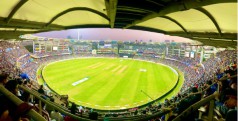



















Sunday, Jul 14, 2024 08:45 [IST]
Last Update: Sunday, Jul 14, 2024 03:15 [IST]
Developing a Life Science Gallery for a Science Museum
involves several key steps and considerations:
Conceptualization and Planning:
Purpose and Audience: Define the goals of the gallery
(education, entertainment, etc.) and identify the target audience (general
public, students, researchers).
Themes and Topics: Select overarching themes such as
biodiversity, human biology, ecosystems, evolution, etc.
Content Development: Outline specific topics within each
theme that will be covered. This could include interactive exhibits, specimens,
models, and multimedia presentations.
Design and Layout:
Floor Plan: Design the physical layout of the gallery
considering flow, accessibility, and visitor engagement.
Exhibit Design: Work with exhibit designers to create
engaging and informative displays. Incorporate interactive elements like touch
screens, augmented reality, and hands-on activities.
Collection and Specimen Acquisition:
Specimens: Identify and acquire biological specimens
relevant to the gallery's themes. This could include preserved organisms,
models, fossils, etc.
Ethical Considerations: Ensure all specimens are obtained
ethically and legally, especially for endangered species or human specimens.
Educational Programming:
Guided Tours: Plan for guided tours and educational programs
tailored to different age groups and interests.
Workshops and Events: Organize workshops, lectures, and
special events related to life sciences to enhance visitor experience and
education.
Technology Integration:
Digital Resources: Incorporate digital tools and resources
to enhance learning experiences. This could include interactive displays,
virtual reality experiences, and digital databases.
Accessibility and Inclusivity:
Universal Design: Ensure the gallery is accessible to
visitors with disabilities. Consider sensory-friendly elements and multilingual
exhibits.
Inclusivity: Represent diverse perspectives and
contributions within the field of life sciences.
Evaluation and Feedback:
Testing and Evaluation: Pilot exhibits and gather feedback
from visitors to refine and improve displays.
Continuous Improvement: Regularly update exhibits and
content based on visitor feedback, new research, and technological
advancements.
Marketing and Outreach:
Promotion: Develop a marketing strategy to attract visitors,
including promotional events, partnerships with schools, and social media
campaigns.
Sustainability and Maintenance:
Environmental Impact: Consider the environmental impact of
the gallery's construction and ongoing operations.
Maintenance: Develop a plan for the regular maintenance and
preservation of exhibits and specimens.
Collaboration and Partnerships:
Collaborate: Work with scientists, educators, artists, and
other experts to ensure accuracy and innovation in content development.
Partnerships: Establish partnerships with universities,
research institutions, and funding bodies to support ongoing development and
sustainability.
By following these outlines, you can create a dynamic and
educational Life Science Gallery that engages and educates visitors of all ages
about the wonders of life on Earth.
List of tentative public display galleries for a Life
Science Museum section:
Creating a display gallery for a Life Science or Biology
museum involves showcasing a diverse range of exhibits to engage visitors with
the wonders of the natural world. Here are some tentative themes or displays
you might consider:
Evolution of Life: Starting from early single-celled
organisms to complex life forms, showcasing evolutionary milestones.
Biodiversity Hotspots: Highlighting unique ecosystems
from around the world and the diverse species that inhabit them.
Human Body: Exploring anatomy, physiology, and
health, including interactive exhibits on organs and bodily systems.
Ecological Interactions: Demonstrating food webs,
symbiosis, and the interconnectedness of species within ecosystems.
Prehistoric Life: Featuring dinosaurs, ancient
mammals, and other extinct organisms with fossils and reconstructions.
Microscopic World: Using microscopes to reveal the
hidden world of microorganisms and cellular structures.
Conservation and Sustainability: Addressing
environmental challenges and showcasing conservation efforts and success
stories.
Genetics and DNA: Exploring the principles of
genetics, DNA structure, inheritance, and genetic engineering.
Adaptations and Survival: Examining how organisms
adapt to their environments and survive through various strategies.
Botanical Gardens: Incorporating displays of plant
diversity, ecosystems, and their importance in sustaining life.
Ocean and Marine Life: Showcasing marine ecosystems,
coral reefs, marine mammals, and conservation efforts.
Interactive Learning Stations: Hands-on activities,
simulations, and multimedia exhibits to engage visitors of all ages.
Establishing a bee/pollinator gallery: Showcasing the
diverse ecological role played by various pollinators including bees in
maintaining the natural dynamics of global ecosystem. Capturing the rich
biodiversity of pollinators working in the nature, not known to the public.
Establishing medicinal plant garden: Medicinal plants serve three
industries like the pharmaceutical,
nutraceutical and functional food based industries. They are useful in both
traditional (Ayurvedic, Homeopathic, Siddha & Unani) and modern medical
practices. But many species are being pushed towards extinction due to over
excitation and hence needs conservation.
Each of these themes can be developed further with specific exhibits,
multimedia elements, and interactive features to create an immersive and
educational experience for museum visitors.
